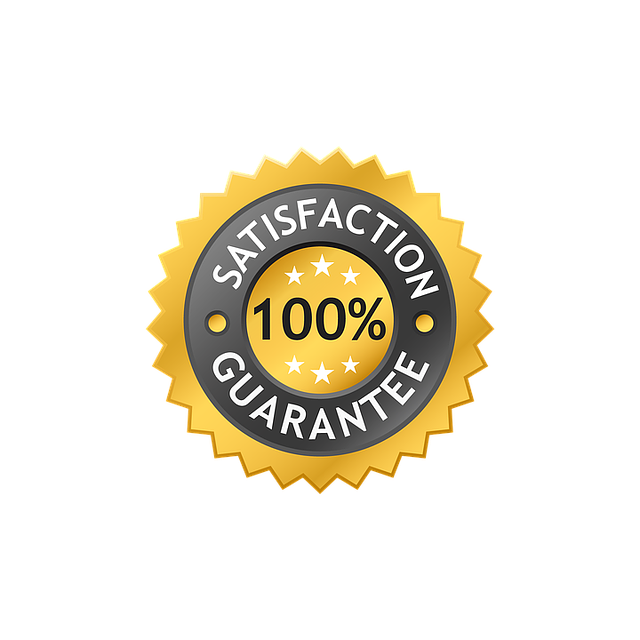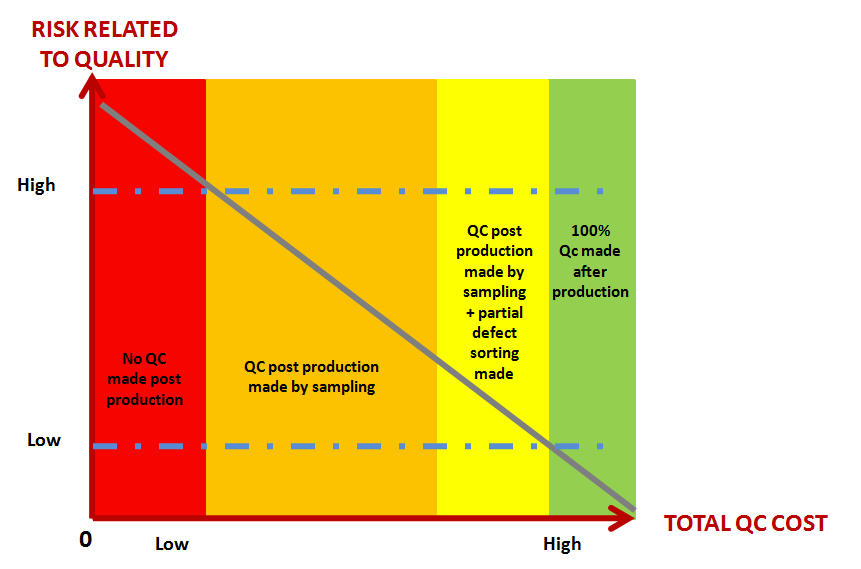
Whereas most of importers use third party inspection company in China are performing quality control, inspection and quality check using sampling plan methodology, I am rather an adept of the 100% quality inspection methology (also called full quality check) because it really allows to diminish risk and problems on productions before shipment of the goods.
There is nothing safer than performing a 100% quality check to control all products manufacured by a chinese supplier all one by one and to reject the defectives one before shipment (not even packing them).
Most of importers use sampling plan as inspection methodology to check the quality of their production because they have to trade off the inspection cost versus the defect allowance on their production.
Normally, product manufacturers should have already performed this 100% quality control by their own via what we call FQC (Final Quality Control). However, there are some suppliers (not all but some) who cut corner on this process to save cost on labor and increase their margin. Indeed, if you reduce a process in the chain, then you save time, you save worker time, hence you save on salary. It also happens that quality control operation in China may not be performed properly by the people in charge of performing qc, in some situation making quality control people to let go some defectives going trough the filter/funnel.
There is then a trade off to consider when choosing which methodology to use to perform quality inspection in China when you are manufacturing some products in China or in Asia.
The graphic below illustrate the typical relationship (grey line) between the risk related to quality and the cost involved for quality control. It was also define different approaches and methodologies to handle this risk at different level: No qc, sampling, sampling + partial defect sorting after qc, full 100% quality check.
Obviously we can see that to reduce the risk related to quality, you need to strenghten the quality control effort.

How can you perform those different actions when procuring products from China.
“Why controlling quality on chinese production”: For the one who don’t know or don’t care
Contrary to all expectations, there are still many importers and online sellers who don’t control their productions. They just buy and ship their goods.
They fall in the red parts of the graphic because they have not enough experience to know that buying from a chinese manufacturer is not like buying from the supermarket in their own country. Quite often they receive goods and get quite disappointed by the quality, this is when they decide to move to the orange zone.
Performing random sampling quality control on your chinese manufacturing: for the one who knows about potential problems and do the minimum
Importers who have a bit more experiences will fall in the second categories (the orange zone): they know they have to inspect their goods before shipment but they will not allocate a high budget to control the quality of their products.
Typically, they will quickly check if there are any major problems using quality control report issued by a third party inspection company. This means, they check the quality but if there is any problem, then they might ask their supplier to rework the goods, or they will try to negotiate with their manufacturer to ship the goods (including the defectives one) and will solve this quality defect by allocating a budget to deal with defectives exchange to customer. In this case they solve defective problem by economical way (“we will allcoate a budget for exchanging product”).
This can work if you don’t care too much about the image of your brand. Remin that today, reputation can go very qucikly trough the Internet
Performing defect sorting on your chinese production before shipment: For the one who knows and who allocate an extra budget for diminishing defective rate
When a first quality inspection operation reveal a certain defective rate, and that the importer is aware about it, they can decide to reduce this defective rate by implementing a defective sorting operation.
So for example, if the quality inspection revealed a 10% defective rate before sorting, and that the importer establish that a 5% defective rate is acceptable, then he can decide to allocate a quality inspector to perform a defective product sorting to reduce the 10% to 5%. This is done by filtering and segregrating a part of the production (not all as the goal is just to reduce a figure from A to B). By removing defectives on a batch you reduce the defective rate.
This is particularly used by trading companies or importerd and distributord who have a contract with their client imposing a certain maximum defective rate acceptable. Normally, after the defect sorting has been performed, a final random quality inspection will be used to validate the percentage of defective found on production.
Performing 100% quality control on your chinese production: For the one who really want a perfect production and no problem at all
For those who really care about quality and who undertsand the non quality cost that may be involved after goods are shipped, and also for those who are caring extensively about the image of their brand, then a 100% full inspection can be usefull. It is also can help you to sleep better because you know that the quality risk related to your import is relatively low, so you will not get any complain.
As the inspection is performed on each single piece one by one, it allows to segregrate all the defective products one by one and to eradicate any quality issue. This is mostly used by luxury brands who can not afford even a 5% defects on their production.
When you do so, the quality control operation takes times because all the pieces have to be inspected individually. Hence, you need to allocate a substantial amount of ressources to perform this operation and those ressources are costly.
You can do it yourself (I made it in the past when I started my career in China) or you can allocate a third party inspection companies to do so. In any case, it provide a high level of control and a high reduction of the risk related to quality. What we do in our company is to have implemented a quality control platform where we receive goods or parts from manufacturers and we inspect them all before shipping them to our client.
Conclusion:
Whatever you are a small importer or a famous brand, you should implement quality control and inspection. If your goods are of high value and that you consider that reworking, or replacing the goods is even more costly after than before, then performing a 100% quality inspection can be a good solution.
Leave a Reply